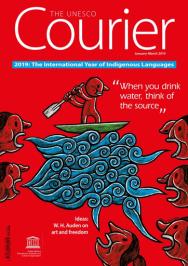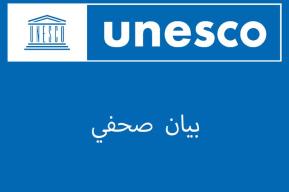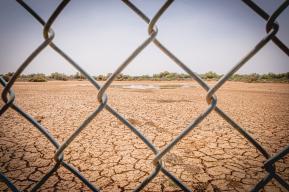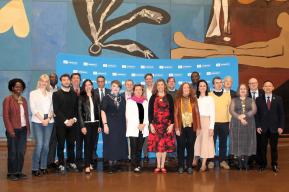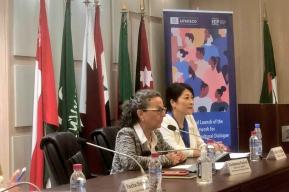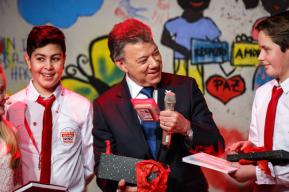مقال
فيديو: أصوات من الشعوب الأصلية

عمل الصحافي والمخرج السينمائي الدانماركي نيلز بويل لسنوات عديدة بين السكان الأصليين على وجه الخصوص في غابة الأمازون، ومرتفعات جبال الأنديز، وسهول ووديان بوليفيا والشيلي، وأمريكا الوسطى، وكندا.
بالنسبة لهذا العدد من الرسالة، وافق على إنتاج مقاطع فيديو من سبعة من أفلامه.
مقاطع الفيديو باللغة الإسبانية.
El derecho a ser consultado. La lucha de los pueblos indígenas hondureños
La película describe la situación de los indígenas lencas y tolupanes hondureños, perseguidos, oprimidos o asesinados por defender los derechos de los pueblos indígenas y sus territorios ancestrales.
Además cuenta la historia de Berta Cáceres, asesinada en 2016. Berta era miembro de la comunidad lenca del norte de Honduras y líder del Consejo Cívico de Organizaciones Populares e Indígenas de Honduras (COPINH). Su oposición a la construcción de una represa provocó una investigación que se saldó con el arresto del antiguo director ejecutivo de la compañía que estaba detrás del proyecto. En 2015, fue galardonada con el Premio Medioambiental Goldman.
Quinua: el mejor alimento del mundo
No solo se come: se baila, se canta. La quinua es un grano ancestral de los indígenas bolivianos de las tierras altas y áridas de los Andes. Se cultiva en tierras de propiedad colectiva. La siembra, cosecha y preparación de la quinua articula el ritmo de vida del Altiplano, sus fiestas de abundancia, sus mercados y sus intercambios. La quinua boliviana no solo es un alimento orgánico y de alto valor nutritivo: es todo un arte de vivir. Pero ahora el “grano de oro” de los indígenas ha sido descubierto al nivel mundial y se consume tanto en los platos de la clase media como en los restaurantes gourmet. Los productores de quinua bolivianos no pueden responder a la demanda, en apariencia ilimitada…
El lago rojo: un genocidio inadvertido en Guatemala
Jesús Tecú es uno de los supervivientes de cinco matanzas de las que fueron víctimas comunidades maya achí por oponerse a la construcción de una represa en 1982. Tecú y otros mayas achí buscan los cuerpos de sus seres queridos. La película muestra además los crímenes de las recientes dictaduras militares en Guatemala. Solo recientemente se abrió paso a juzgar a algunos de los opresores, como en el juicio por genocidio al exdictador Ríos Montt, ahora fallecido.
Un sueño hecho realidad: una cooperativa de mujeres en Guatemala
Un grupo de mujeres maya kakchikel del campo de Guatemala no logran ser aceptadas como miembros de la cooperativa de los hombres y deciden crear su propia cooperativa. Una de las mujeres fundadoras narra su historia. Cuenta cómo ha sido víctima de violencia machista y ahora encuentra esperanza en el esfuerzo común de mujeres desarrollando una cooperativa.
Voces de Bolivia
”Voces de Bolivia” es un retrato poético de un pueblo de los Andes y de los indígenas quechuas que viven en su proximidad. No hay agua potable, ni luz ni alcantarillado. Una vez al año, en la Fiesta de Santiago, los campesinos vienen al pueblo a vender sus productos. La película ha recibido muy buenas reseñas en los medios daneses más importantes (5 de 6 estrellas en el diario más conocido de Dinamarca, el Berlingske Tidende).
No todo lo que brilla es oro – un relato sobre dos aldeas y una compañía petrolera en la Amazonía
Una compañía transnacional busca petróleo en la Amazonía ecuatoriana. Esto crea divisiones entre dos comunidades indígenas. Los habitantes del pueblo de Canelos esperan que la compañía petrolera cree trabajos y oportunidades. En la comunidad vecina de Sarayacu, los habitantes rehúsan la entrada de la compañía petrolera a su territorio porque quieren proteger el medio ambiente y su modo de vida tradicional. Las dos comunidades que antes vivían como buenos vecinos se encuentran en conflicto.
Píldoras, plantas, doctores y espíritus – un viaje a la Costa Atlántica de Nicaragua
La narración de un viajero europeo que llega a la Costa Atlántica de Nicaragua (“La Misquita”) sorprendido por cómo los misquitos parecen haber perdido su manera tradicional de vivir. Se visten con pantalones vaqueros y gorras de béisbol, son cristianos y no parecen por nada exóticos. Viajando a aldeas cada vez más lejanas, el viajero descubre que hay creencias y usos tradicionales que siguen vigentes entre los misquitos a pesar de su aparente asimilación a la modernidad occidental. Hasta un pastor y el responsable de una clínica de salud lo admiten: “Si no hay medicamento, encontramos un curandero o una hierba medicinal para curarnos”. En la película las impresiones subjetivas de la vida de los misquitos se alternan con retratos de habitantes que cuentan su visión del mundo misquito.
The right to be consulted: The struggle of the indigenous peoples of Honduras (Spanish)
The film tells the story of Berta Cáceres, who was murdered in 2016, and in general, the struggle of indigenous peoples of Honduras resisting the looting of their land by private companies. Cáceres was a member of the lenca community in Northern Honduras and the leader of the Council of Popular and Indigenous Organizations of Honduras (COPINH). Her fight was against the construction of an hydraulic dam. She was awarded the Goldman Environmental Prize in 2015. The investigation into her death led to the arrest of the former executive director of the company behind the dam project. (2018, VF Film)

Quinoa: The best food in the world (Spanish)
Quinoa has been grown for centuries by the indigenous peoples of the Bolivian highlands. Organic, healthy and gluten-free, quinoa has won the hearts of Westerners. Some of the poorest Bolivians have benefited from its increasing popularity on the international food market. As land ownership is collective and the farmers are organized in cooperatives, the communities themselves, and not just a few individuals, are able take advantage of the boom. (2014, VF Film)

The Red Lake: An unnoticed genocide in Guatemala (Spanish)
Jesús Tecú is one of the survivors of five massacres which took place in 1982, when the military government of Guatemala decided to build a hydroelectric power station on the Rio Negro, in spite of local opposition. The film follows Tecú’s and the struggle of other Maya Achís to obtain justice, thirty years after the horror. (2013, VF Film)

A dream comes true: A women’s cooperative in Guatemala (Spanish)
A group of Maya Kakchikel women from the Guatemalan countryside are denied membership in the men’s cooperative. They decide to create a cooperative of their own. The story is told by one of the cooperative’s founders, a 37-year-old woman who has experienced machismo and gender violence but now finds hope in the common struggle of the women. (2013, VF Film)

Voices from Bolivia (Spanish)
A poetic portrait of everyday life in a remote area of Bolivia as told by Mayda, a 9-year-old girl from the village of Azurduy. Once a year, the village comes to life during a weeklong market – it is inundated by itinerant tradesmen, fortune-tellers and Indian peasants, who ride into town or walk down from the surrounding mountains. The images of the film pay respect to the majestic calm of the Andean mountains. It received very good reviews in the mainstream Danish media : 5 out of 6 stars in Berlingske Tidende. (2005, VF Film)

Not everything that shines is gold – a tale of two villages and an oil company in the Amazon jungle (Spanish)
A multinational oil company wants to search for oil on indigenous territory in the Amazon jungle of Ecuador. This creates divisions between two Indigenous communities – one of which hopes the company will bring jobs and growth to the region, while the other wants the company to stay away in order to preserve the environment and the traditional way of life. Friends split up, families are divided and communities which used to be good neighbours are in conflict. (2005, VF Film)

Pills, Plants, Witches and Doctors: A journey to the Atlantic Coast of Nicaragua (Spanish)
A European traveller arrives on the Atlantic coast of Nicaragua (La Mosquitia) and is surprised to see that the Miskitos seem to have lost their traditional way of life. They are Christian, they wear jeans and baseball caps. Travelling to more and more distant villages, the traveller discovers that there are still traditional beliefs and customs among the Miskitos, particularly in the area of health care. Even the head of a health clinic, as well as a shepherd and admit it: "If there is no medicine we find a healer or a medicinal herb to cure us". In the film, subjective impressions of the life of the Miskitos alternate with portraits of inhabitants who describe their vision of the Miskito world. (VF Film, 1994, in cooperation with Barbara Scherfig)

Niels Boel
Author of a dozen documentaries shot in Latin America and Africa, Niels Boel (Denmark) is a journalist and an independent film director (www.vffilm.dk). He was responsible for the Oxfam IBIS communication programme dealing with indigenous peoples in Latin America and has also worked as head of section with the Danish Ministry of Culture and as a consultant for the Danish International Development Agency (Danida). He is the author of the books Migration in the Age of Globalization (2009) and The New Latin America (2016), in Danish.
